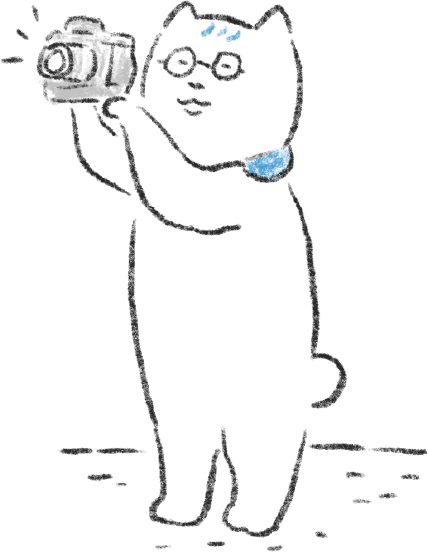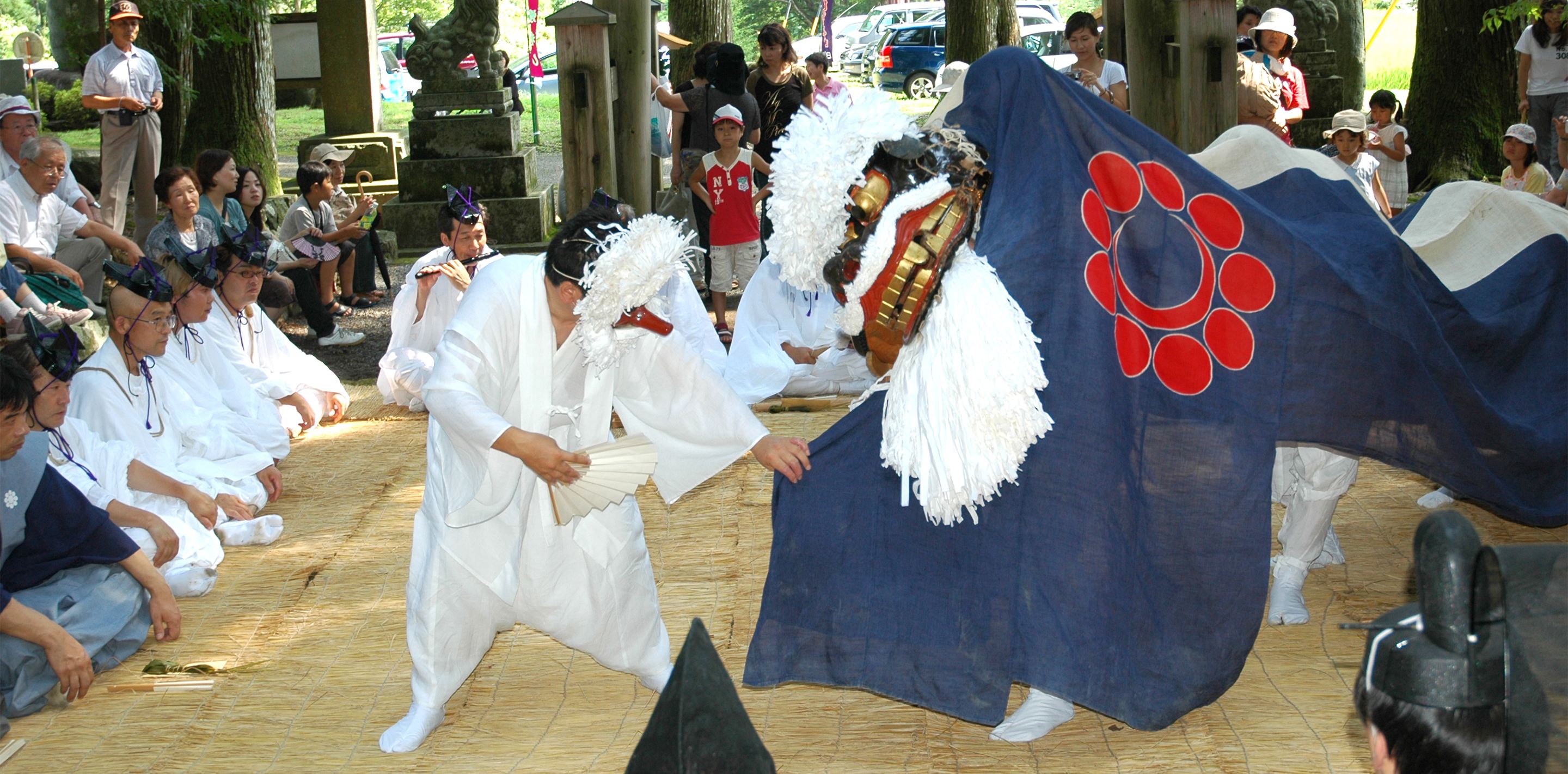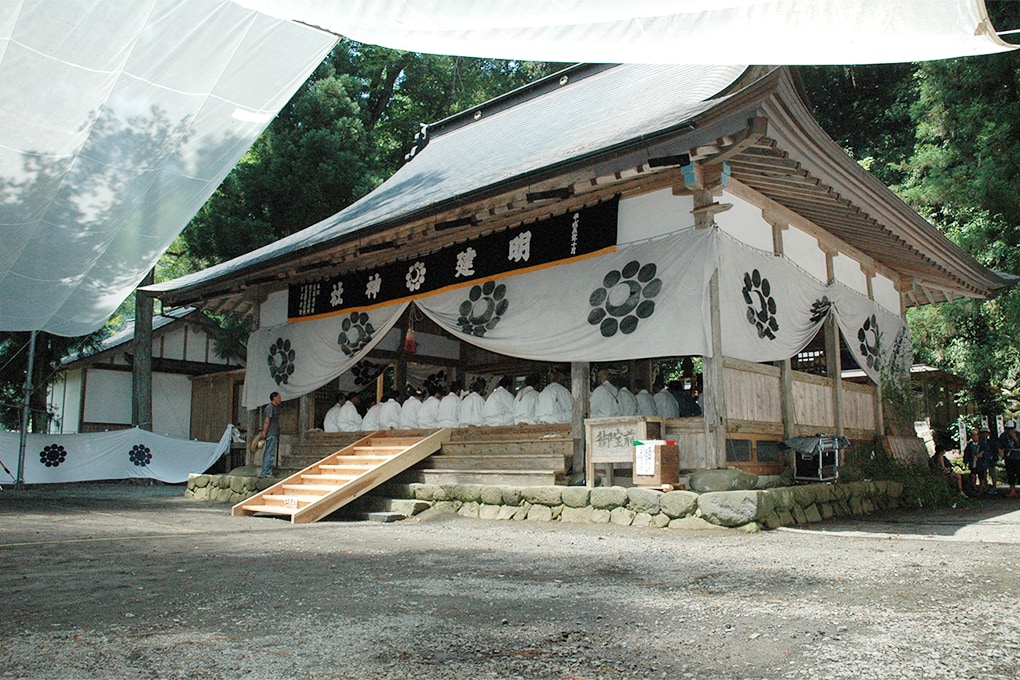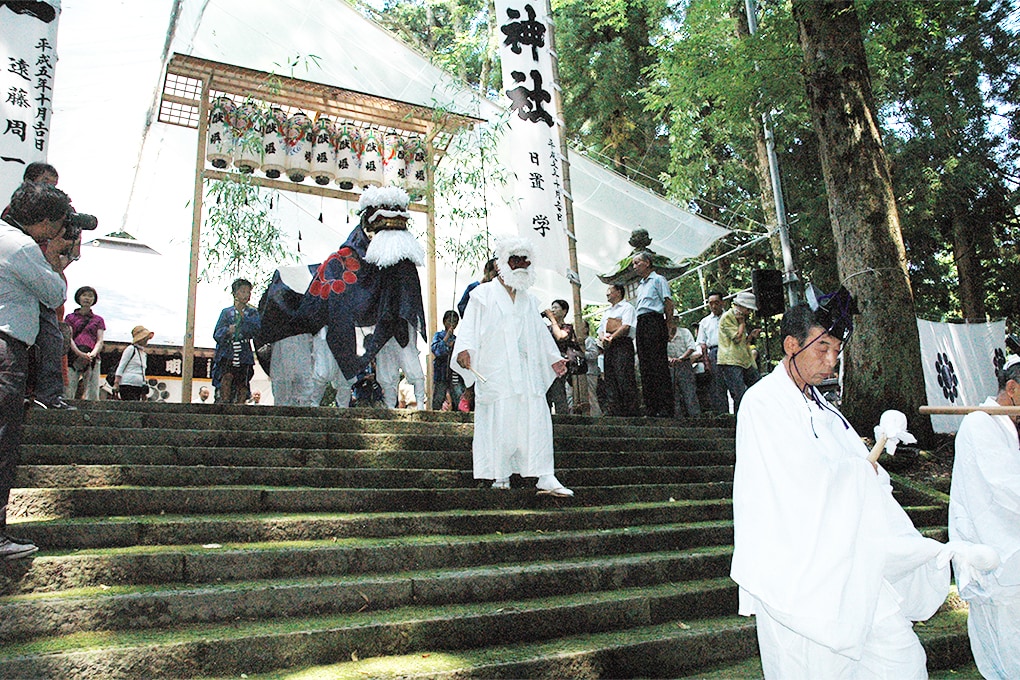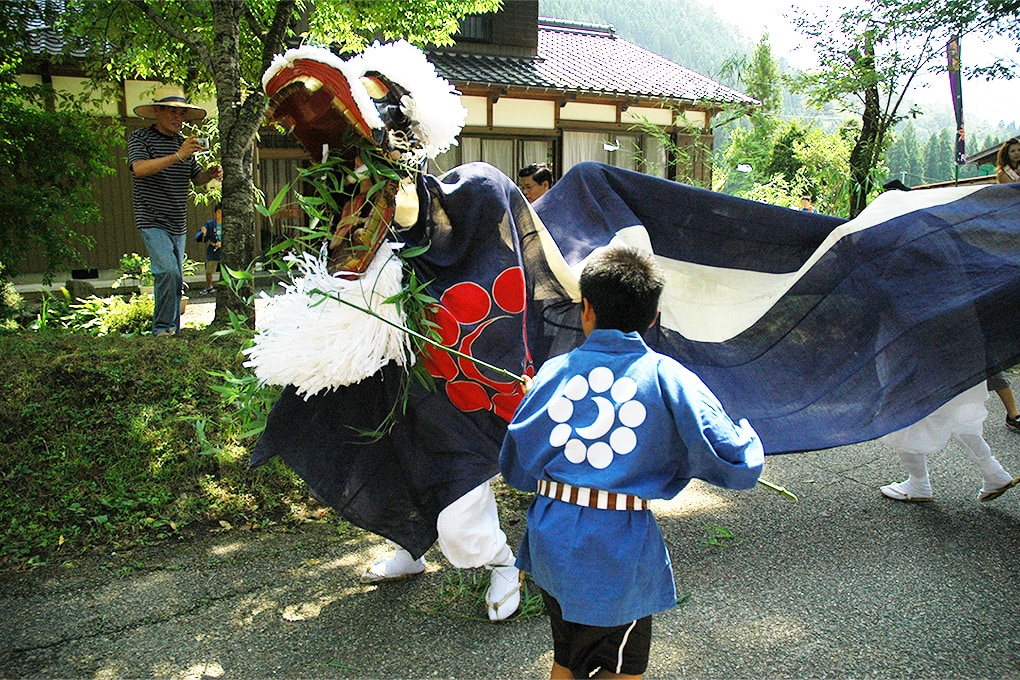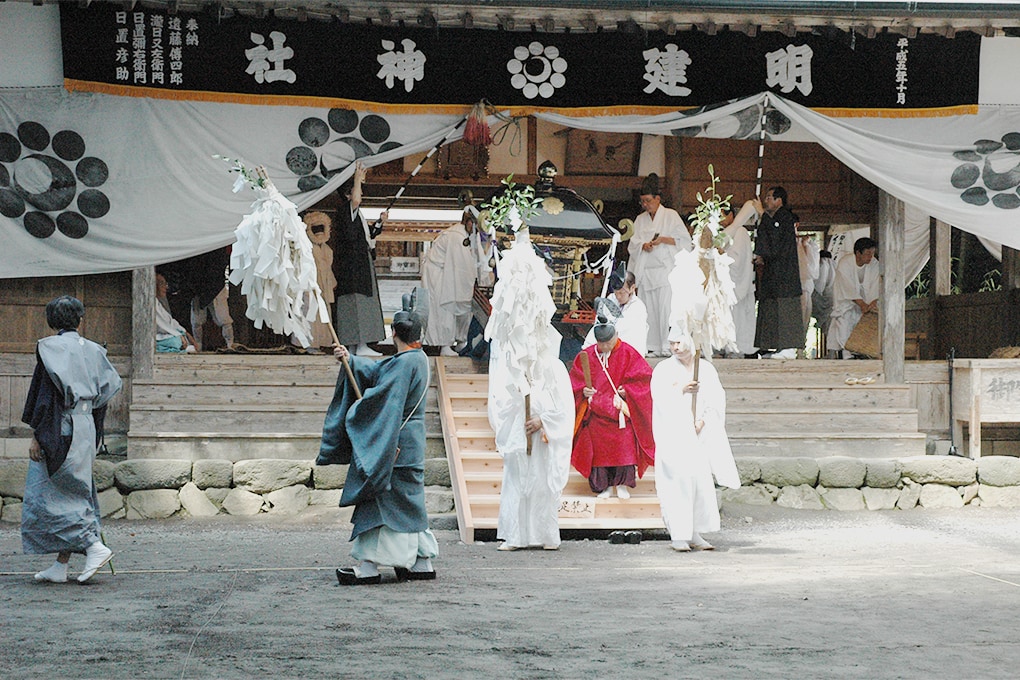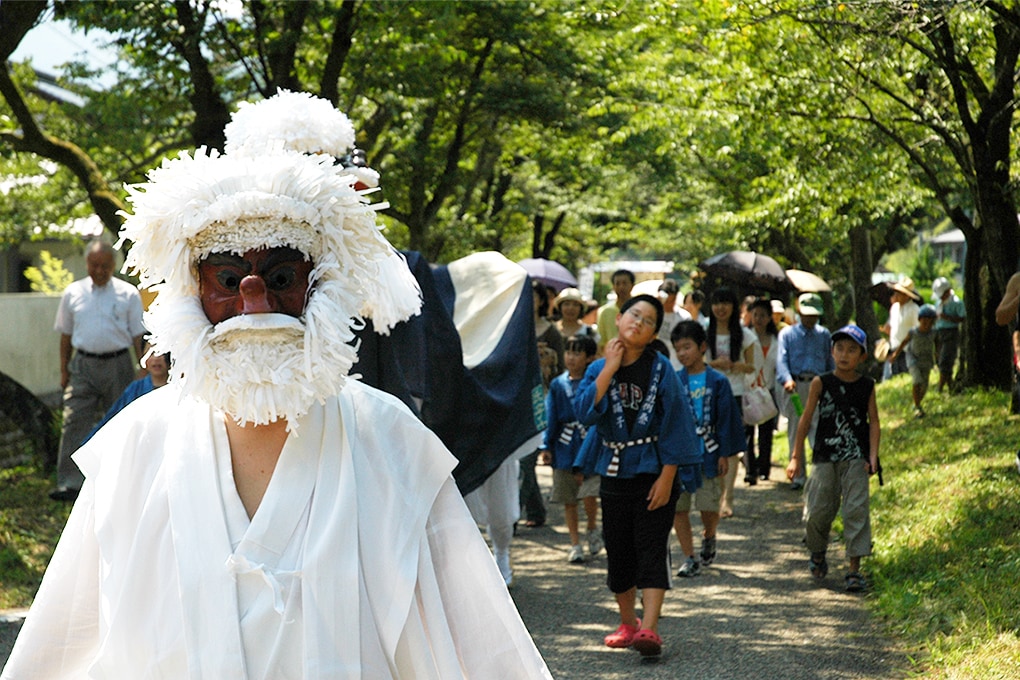Myoken-jinja Shrine and Nanukabi Matsuri


Myoken-jinja Shrine was originally given by Lord To after the war during Kamakura era (1185 – 1333) and was moved from Shimousa-no-kuni (currently Chiba Prefecture). It was a shrine enshrining Myoken Daibosatsu. Until Edo era (1603 – 1868), it was called Myoken-gu or Myoken-sha. This “Nanukabi Matsuri (Seven Days Festival)” is held on July 7th (August 7th in the new calendar). It was also introduced by Lord To and is said to have a history of more than 800 years. The ministers of this festival are still hereditary passing from generation to generation. From one week before the festival, they start preparing the festival with devotion. The festival is held in the order of Shinji, Togyo, and Nomatsuri.


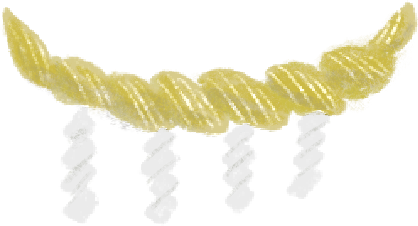
[ Shinji ]
The ministers gather after bathing to cleanse their minds and bodies and perform Shinto rituals in the order of food offering and withdrawal, rituals in front of gods, and rituals of transferring.
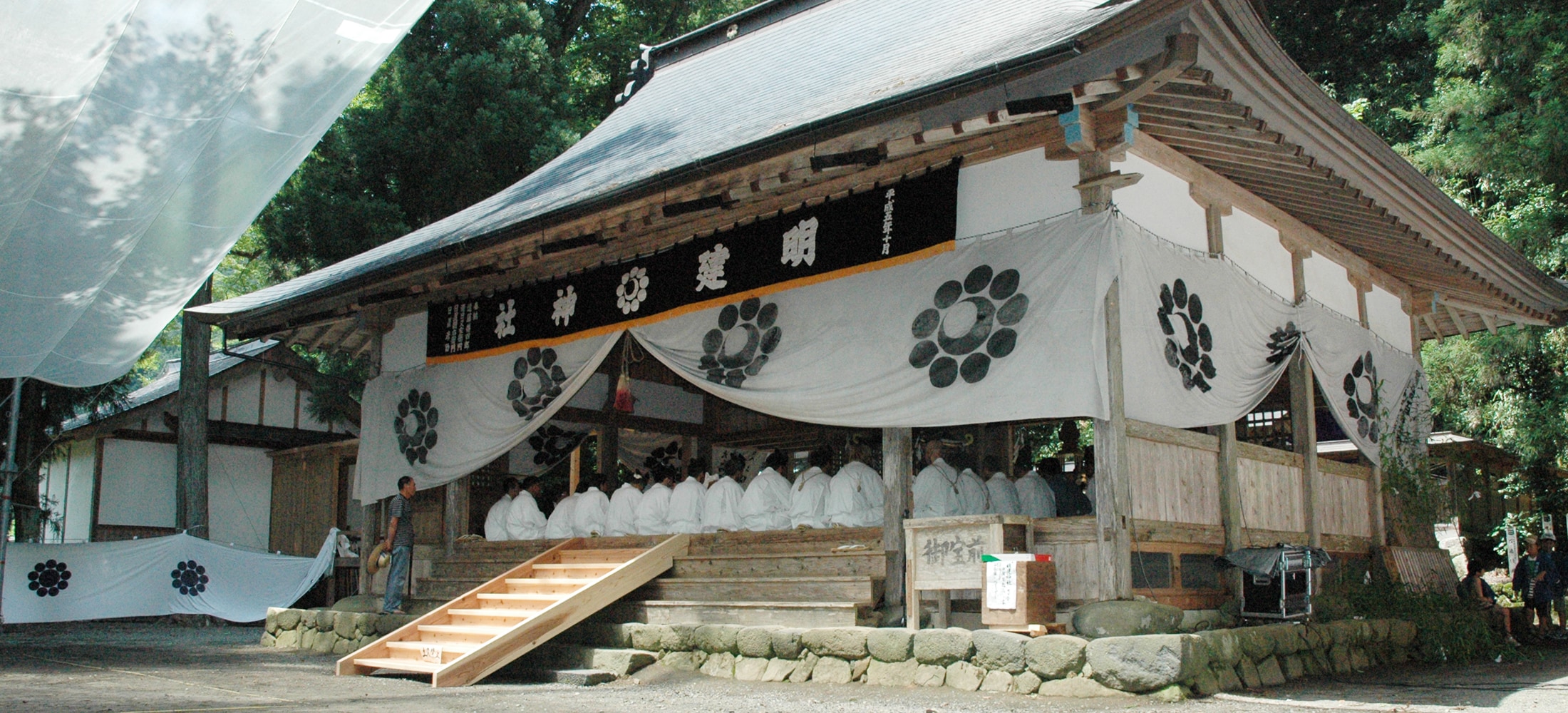
[ Togyo ]
Adults and eight children called Shinoha Odoko form a line followed by a lion, and after turning clockwise three times around the hall of worship, they go down the approach with a Mikoshi (Palanquin). They make a round trip on the 230-meter approach road lining with cherry blossom trees, from the 700-year-old Kami-mukae-sugi (God welcoming cedar tree) to Kami-kaeri-sugi (God returning cedar tree). The lion dances for a while after turning back from the Kami-kaeri-sugi, and bites the “Take-hayashi” which the dancers holding.
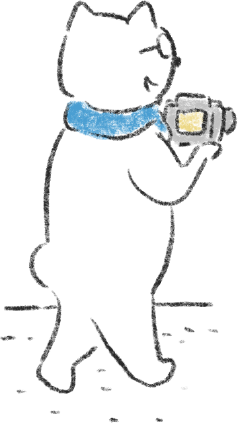
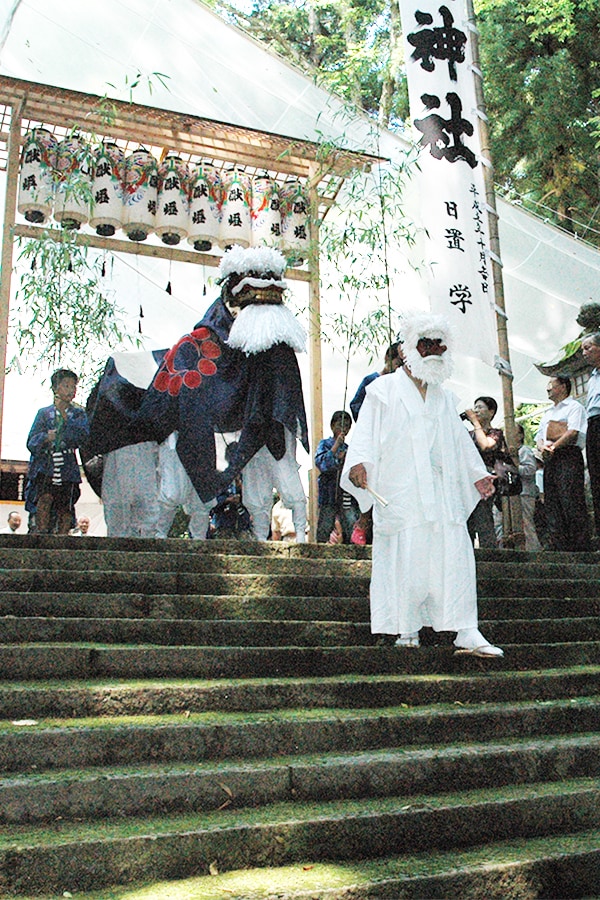

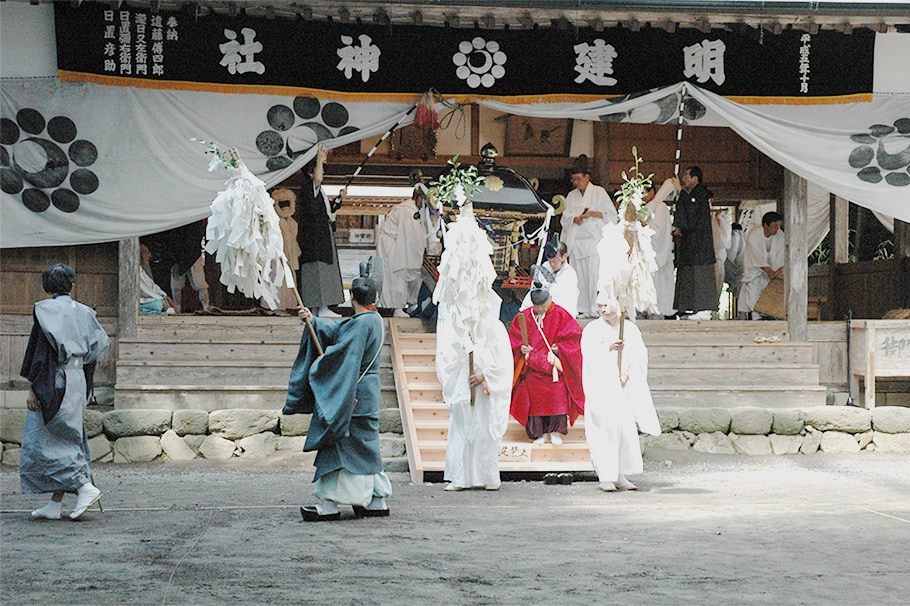
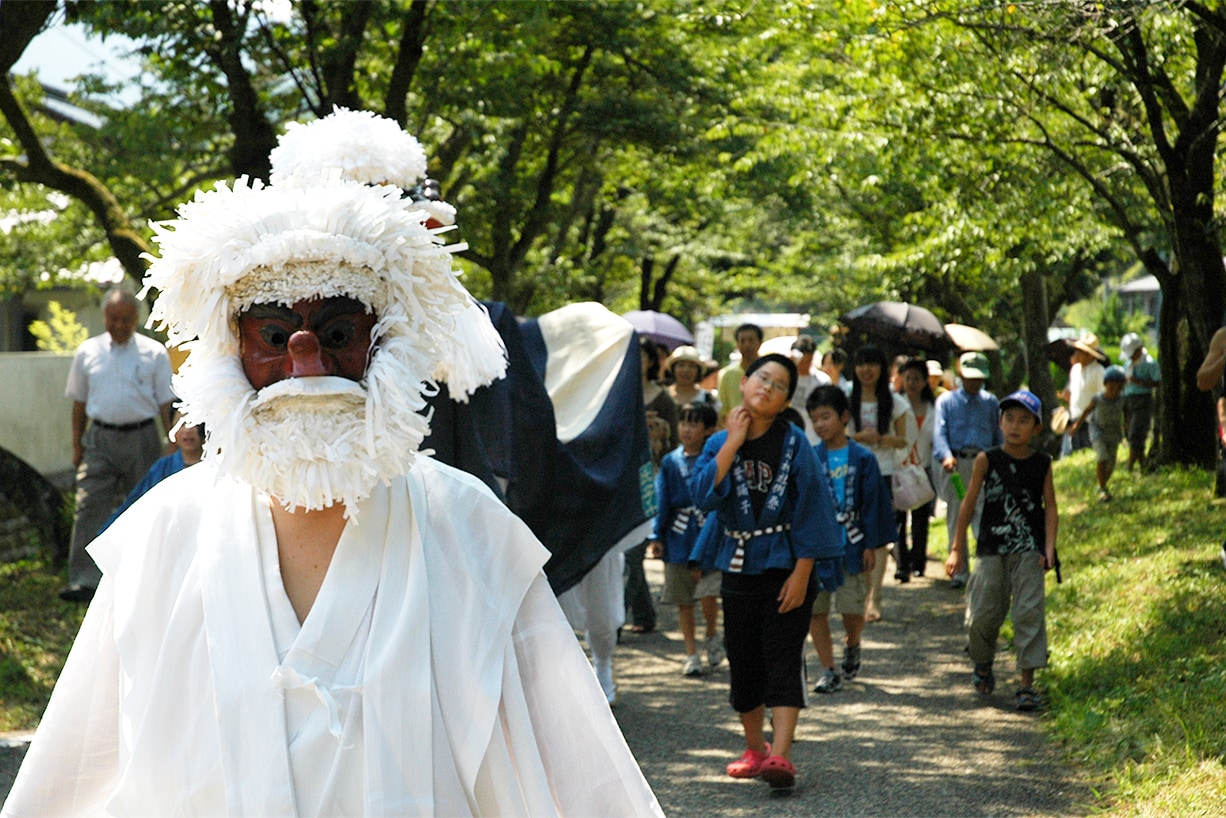
[ Nomatsuri ]
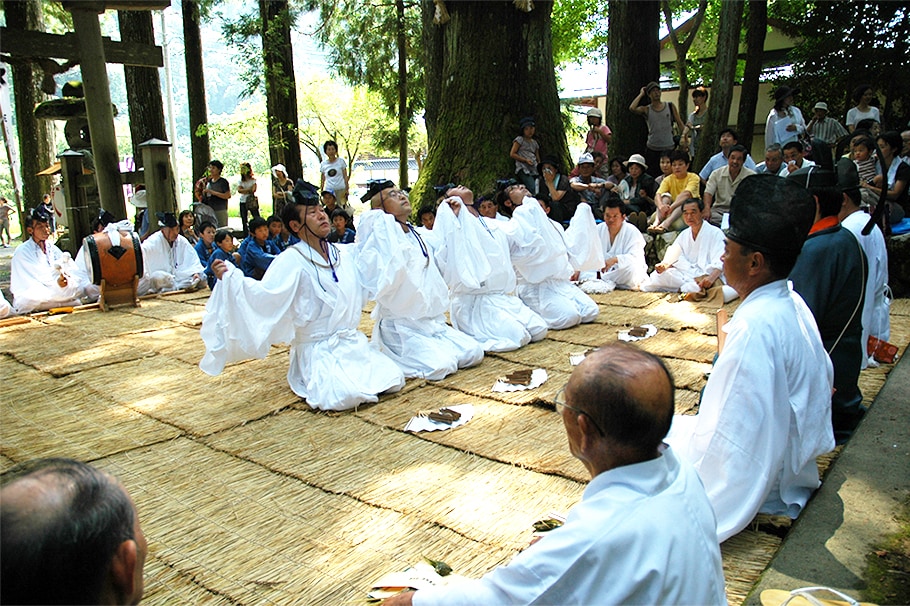
Nomatsuri, which can be said to be the climax of the festival, follows the flow of the medieval entertainment “Dengaku” and dedicates the dance of the gods, the dance of the pestle only, and the dance of the lion. Above all, it is a masterpiece that the pestle only dances, which is the act of making mochi, throws the pestle up high, and catches it.

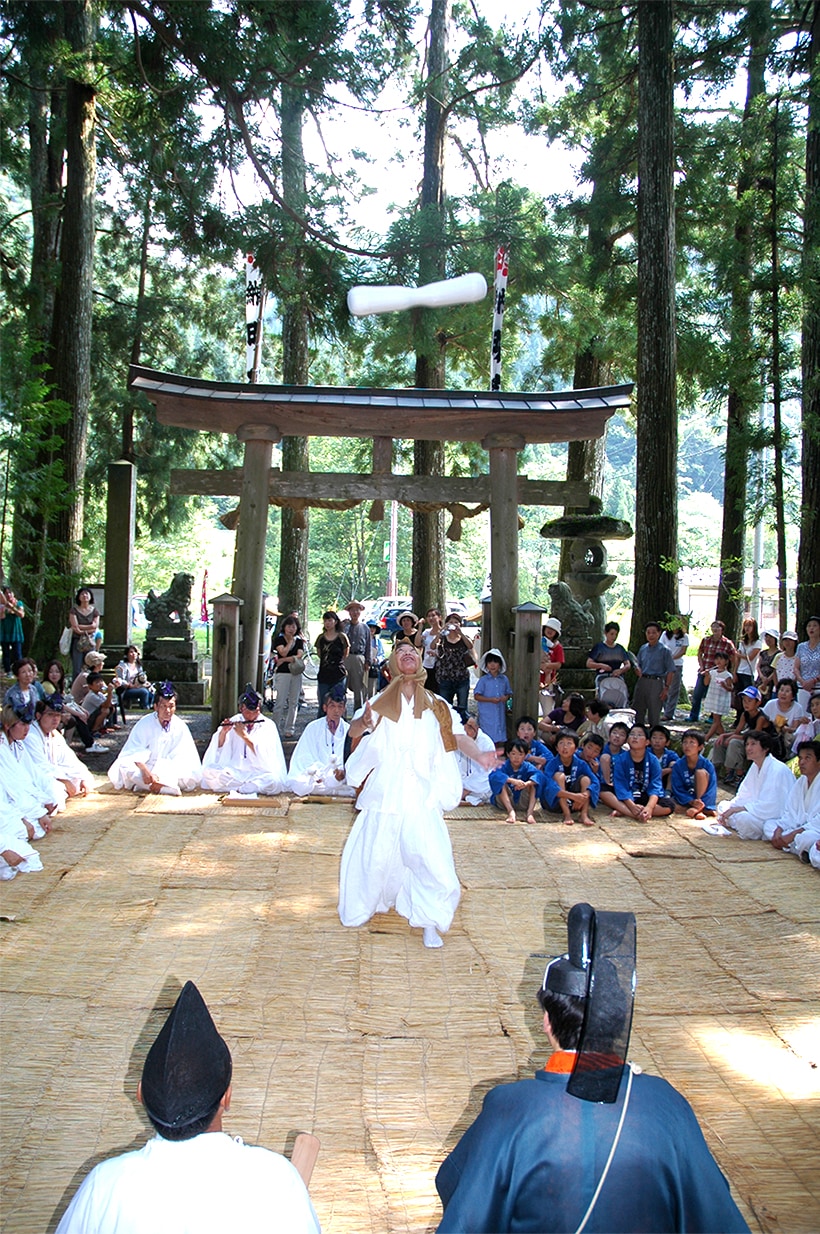

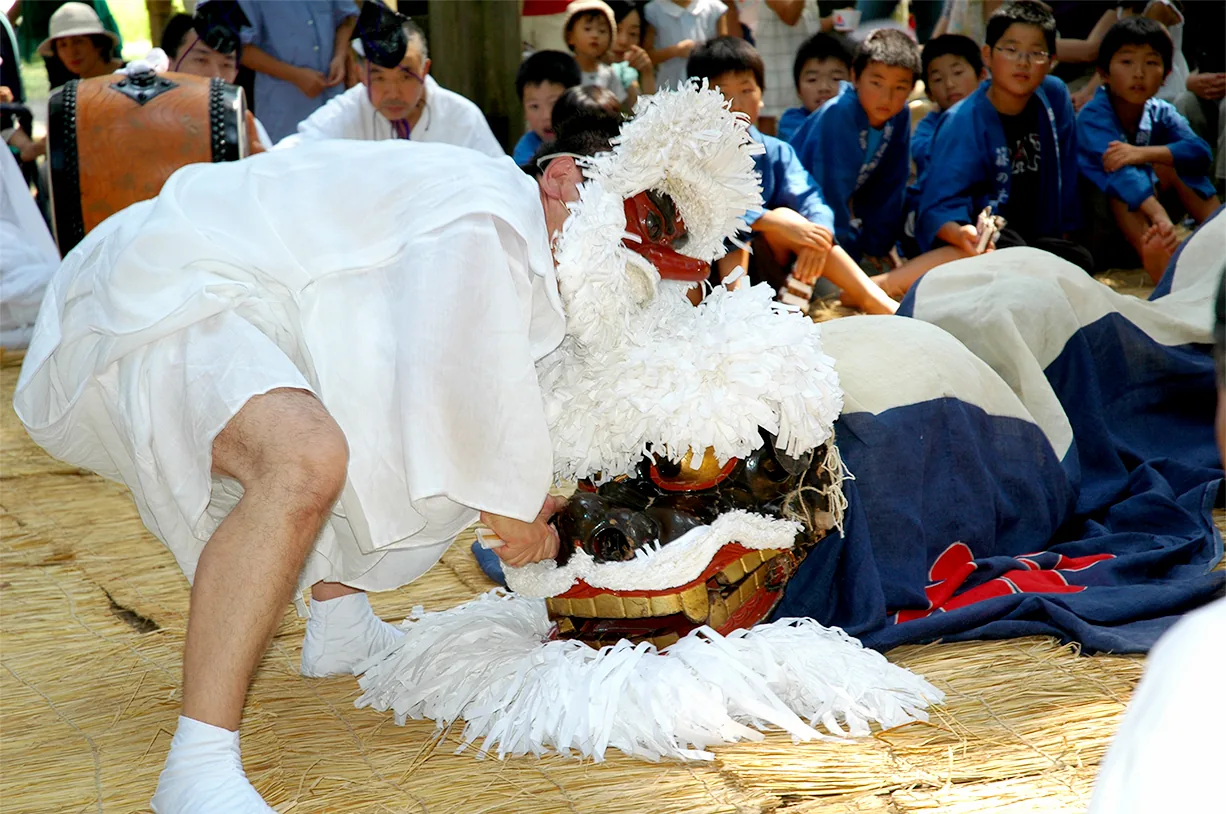
When Nomatsuri is over, people return to the hall of worship again, and the offerings to the god (Nusa) are transferred to the Mikoshi and carried back to the main shrine. After that, the festival ended.

